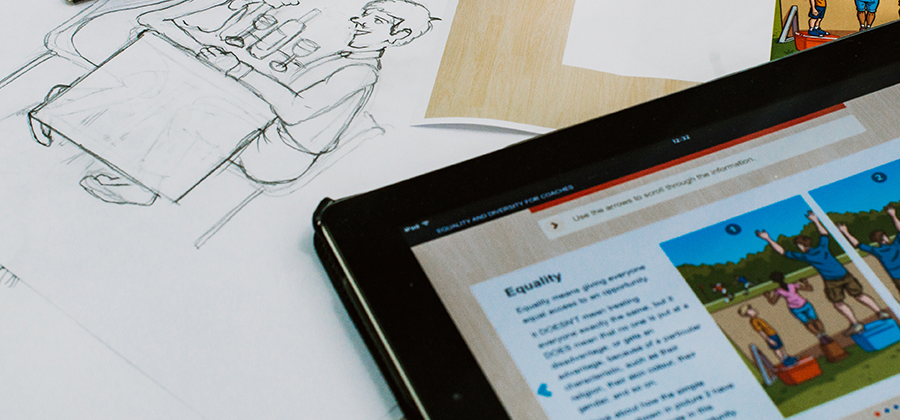Introducing the Next Generation of eProspectus
The UK’s Leading eProspectus and CAP System is set to become ‘the way students apply online’.

eLearning is now a common inclusion in the training programmes of many organisations. This includes private enterprise, the public sector and all levels of education. Stand-alone computer based training and basic interactive video style delivery actually pre-dates the internet, but only since that revolution has eLearning exploded in power, reach and relevance.
Early attempts at pioneering eLearning content included simulated page turning styles or poorly designed interactions which left learners, bored, disengaged and often unable to even remember the basics of what they had been ‘taught’.
Research conducted in 2017 by US learning expert Will Thalheimer, PhD reveals that in a straight shootout between eLearning and standard classroom learning the results are often very similar. When learning methods are held constant between eLearning and classroom instruction, both produce equal results. In other words, a PowerPoint presentation or lecture delivered in a classroom environment has approximately the same impact as one delivered in eLearning format with a voiceover or video presenter.
What does make a difference is the method rather than the modality. Therefore, such factors as well thought out interactive activities, realistic practice, spaced repetitions, real-world contexts and feedback become vitally important.
Blended learning is where traditional methods such as classroom delivery and practical exercises are mixed with online delivery to create a hybrid learning experience. With learners tested in Thalheimers’ study equally satisfied with both eLearning and classroom modes and thus not providing any serious disadvantage the results really hit hard, a 13% improvement in declarative learning (subjects which can form discussion points) and an even more impressive 20% increase in procedural knowledge (usually fixed order lists of instructions).


The bottom line here is that eLearning in the real world tends to outperform classroom instruction, but only if that eLearning has been designed in such a way to take advantage of the wider amount of delivery methods available. When learning designers add technology enabled capabilities, they tend to create learning methods which are different from and more effective than those typically used in classroom delivery, which has an over-reliance lecture styles as the prime method.
At the inception of any new eLearning piece should be a considered period of research defining the learning outcomes. Without an understanding of the audience and where the learning journey needs to take them the chances of making significant improvements are virtually nil.
Instructional design is the next key phase whereby all the detailed information relating to learning content is assembled and ordered. This process usually involves consultation of subject matter experts to impart knowledge and resources.
Once this process is completed only then can the eLearning architect and designer begin the process of assessment which will eventually lead to the authoring of specific eLearning methods and interactive activities specifically designed to stimulate and motivate the learner towards the goals set out during the project inception.
During part 2 of this blog post we will be looking at some examples of eLearning best practice and the results that were driven from those examples.
----------------
First Media have recently won a tender to provide eLearning methodology development into the Agriculture and land-based learning sector, using funds from the Department for Education. The project will use the blended approach to educate learners on a variety of challenging vocational topics leading to a recognised City & Guilds qualification.
For an informal chat on eLearning projects related to your organisation, please call Business Development Manager, Ian Hall on 01507 607783
If you’d like to speak to us about how we might be able to help you with your next project, call us on 01507 607783 or fill out this form and we’ll be in touch in a jiffy.
|
You should also read…
The UK’s Leading eProspectus and CAP System is set to become ‘the way students apply online’.
Keep your learners and audiences engaged
Recent research suggests that over the last few years’ employees (mainly in the private sector) are not engaging with the company they work …